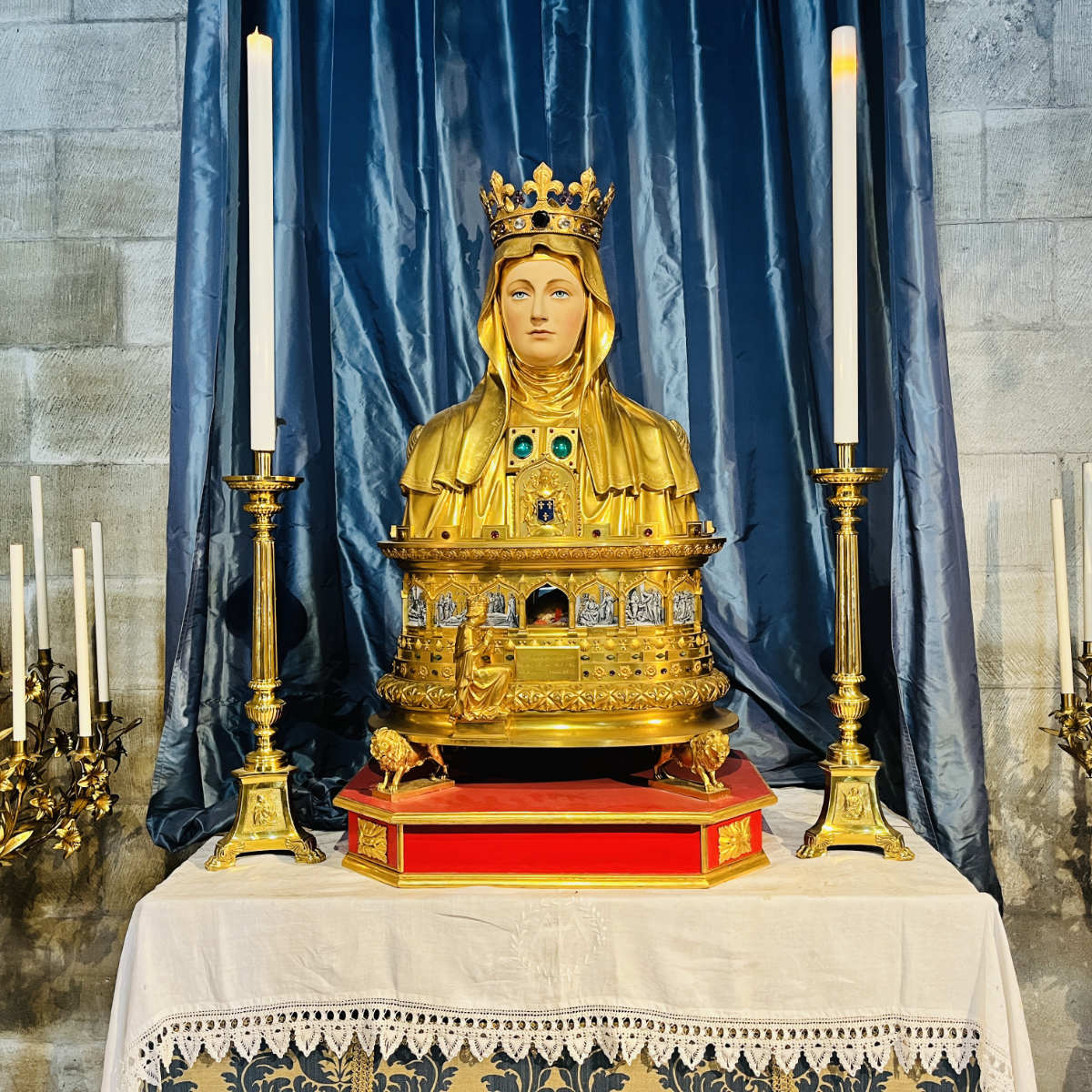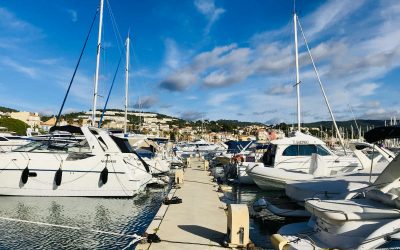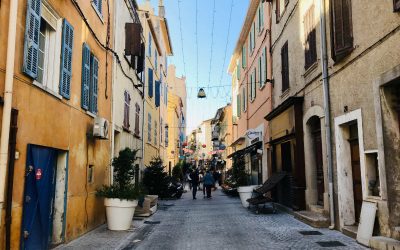Located on the river Rhône, the small town of Tarascon in Provence was founded on a rather surprising folktale. It is famous for being the presumed resting place of Saint Martha of Bethany, the sister of Mary Magdalene.
As the story goes, Mary Magdalene, her sister Martha and brother Lazarus all arrived in Provence near Marseille around the year 43 AD, after the resurrection of Jesus.
There they would separate, each going their separate ways in order to spread the word of Christ. Mary Magdalene would end up in Saint-Maximin-la-Sainte-Baume, Lazarus in the town of Autun, Martha in Tarascon, and Maximus in Aix-en-Provence.
While archeologists and historians made debate the verity of the tale, there is in fact a church and a tomb dedicated to Sainte Marthe in Tarascon, and Maximus is generally recognized as one of the most famous saints in France.
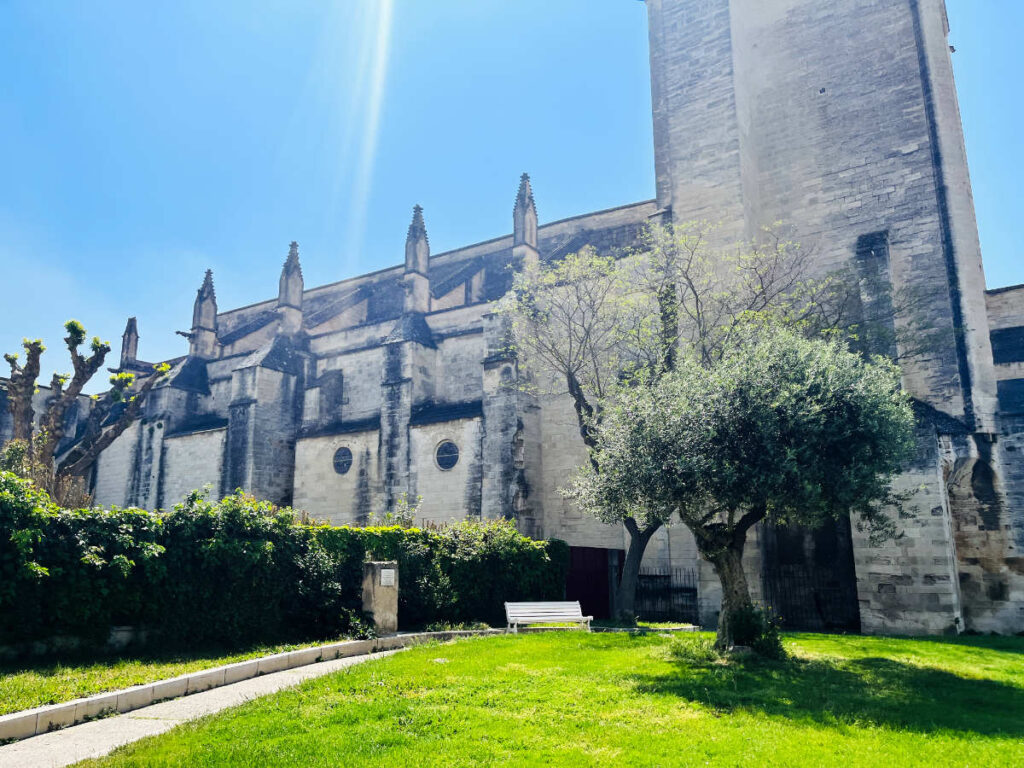
Located on the edge of the Alpilles hills near Avignon and Arles, human settlement has dated here since prehistoric times. These days with a population of about 15,000, it is a town that continues to attract visitors and pilgrims to the church, but also to the nearby Pont du Gard aqueduct that was built by the Romans centuries earlier.
Across the other side of the Rhône river from Tarascon, is the small town of Beaucaire, with the duelling châteaux of each town facing each other. Beaucaire is in the region of Occitanie, with Tarascon in Provence. The mighty Rhône river was a border separating the two lands who were under different rulers.
Today, it is a regional border and a walkable bridge extends across the Rhône river into each town. So let’s explore the top things to see and do in Tarascon, shall we? Allons-y!
Things to do in Tarascon
1. Eglise Sainte-Marthe de Tarascon
Right in the center of town, near the river Rhône is the Collegiate church of Saint-Martha. It contains the relics and the tomb of St. Martha in the crypt which was believed to have been built on the exact location of her house.
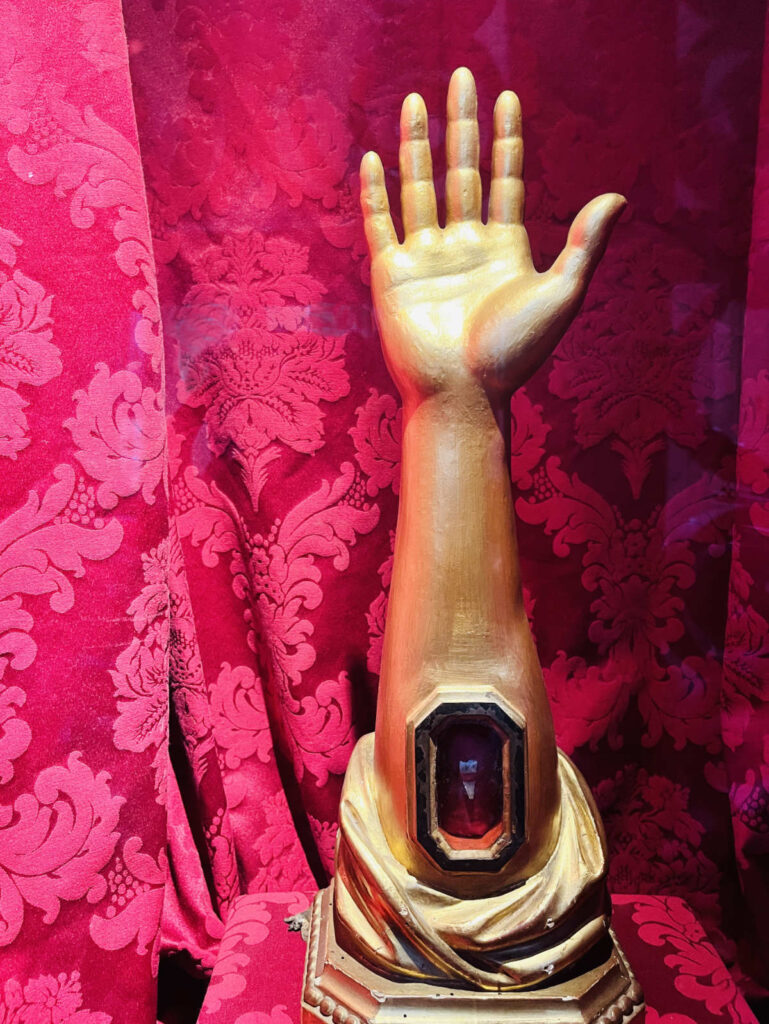
The church dates back to the 12th century and although the crypt inside dates from the 3rd century. It houses the relics of Martha in a sarcophagus of the 4th century.
The church was built in Romanesque style in the 12th century, and updated in Gothic in the 14th century. Portions of it were severely damaged during the French Revolution and WWII, but then restored.
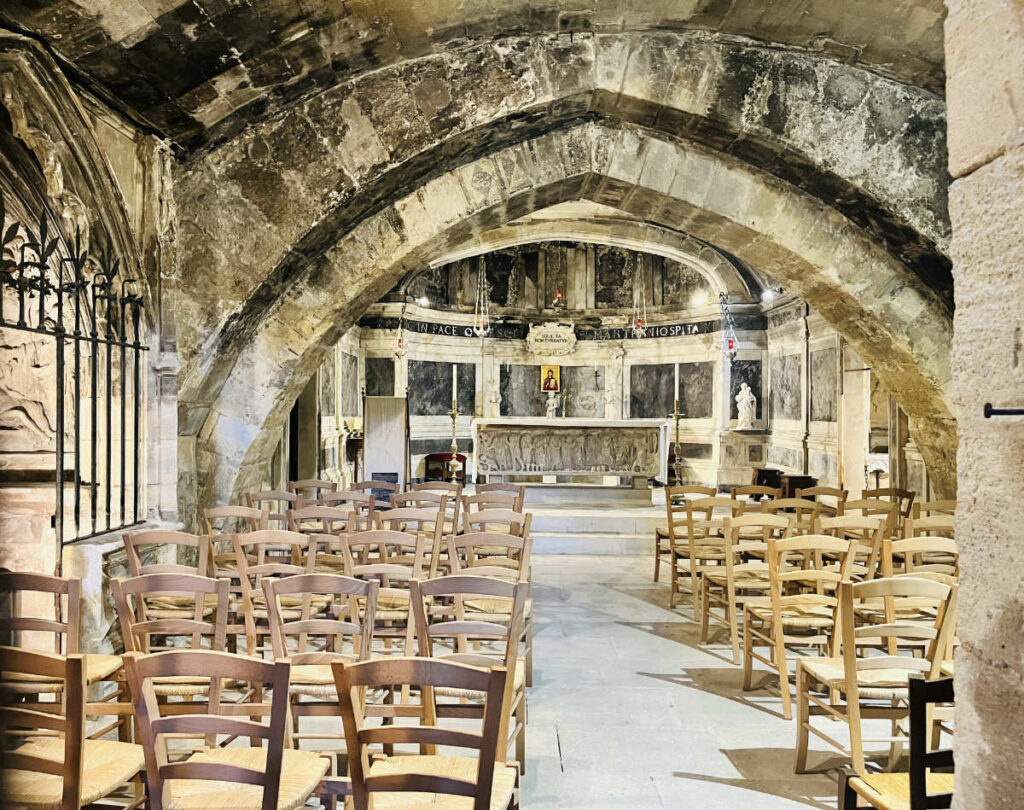
2. Look for the Statue of the Tarasque
The name of the town also dates back to Saint Martha. Legend has it that at that time, on the banks of the Rhone River, there was a fearsome dragon terrorizing the region. It was called a Tarasque, and had an armored shell with spikes, razor-sharp teeth and could shoot fire.
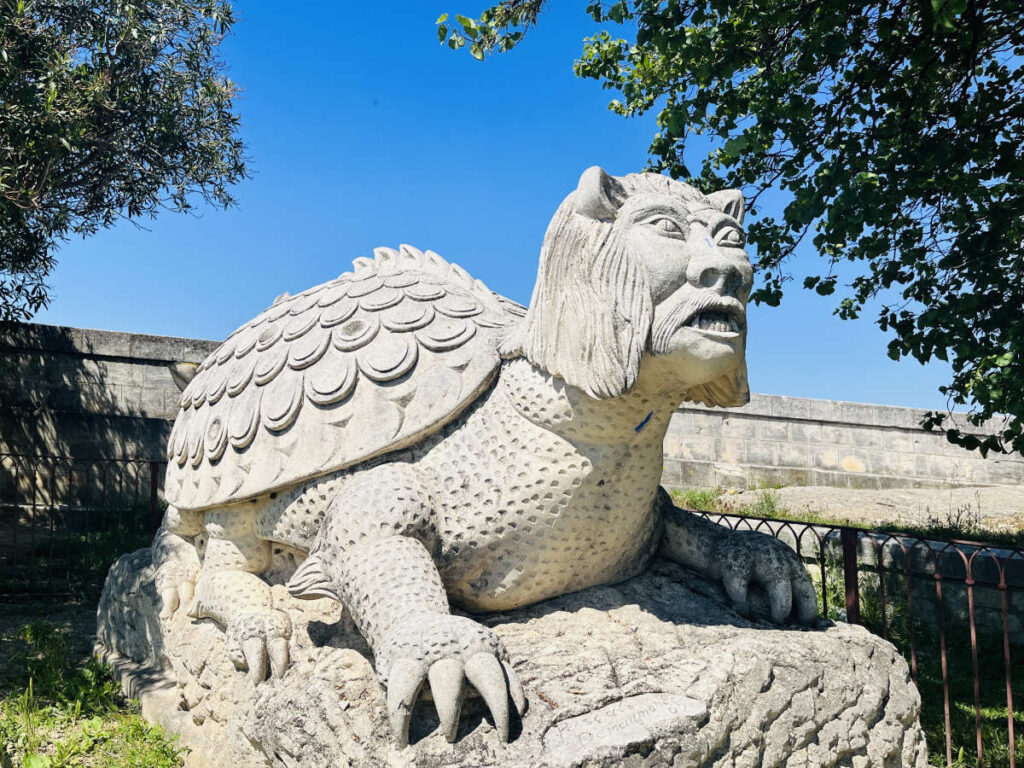
Killing everything and everyone in sight, the local villagers and soldiers lived in terror of the Tarasque. When Martha arrived to convert the villagers to christianity, they asked her to prove it with a miracle. The challenge issued was to rid the town of the Tarasque.
The tale says she threw some holy water on the Tarasque and his fiery breath was immediately extinguished. Then she held up a cross and the monster was instantly subdued. The villagers then killed the tarasque and the legend of Saint Martha was born.
A statue of the Tarasque can be found right across from the Church, next to the Château de Tarascon. The Fête of the Tarasque, which is held in the town every year on the last weekend of June, was proclaimed a Cultural and Intangible Heritage of Humanity by UNESCO.
3. Château de Tarascon
Next to the statue of the Tarasque is the large imposing Château de Tarascon. It was originally the site of a Roman fortress, before being replaced by a castle in the 12th century, at the same time that the Collegiate church of Saint Martha was constructed.
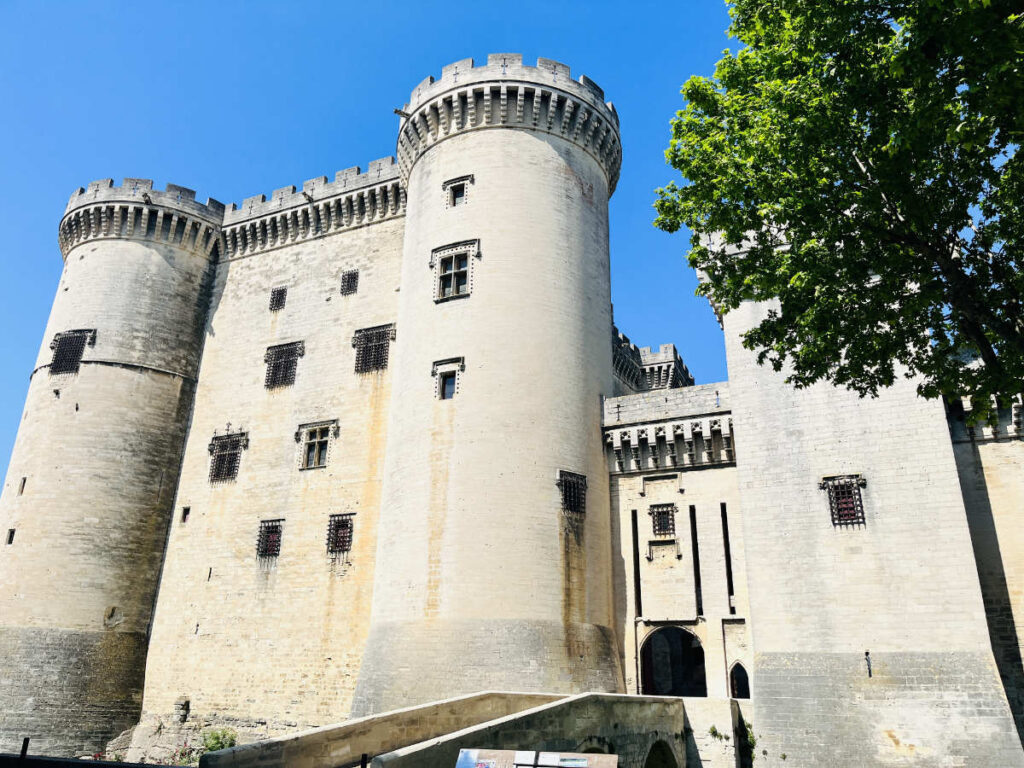
At the time, this area was not wholly part of the Kingdom of France. Construction started in 1401 by Louis II, Duke of Anjou and Count of Provence. It was continued by his first son, Louis III of Anjou, and completed in 1449 by his second son, René I.
René would become the King of Naples, and become known as Good King René. It is René who would encourage and celebrate much of the myth of Saint Martha, and making the town quite famous in the medieval Middle ages.
The château became a stronghold for King René. With imposing towers about 147 feet (45m) high, it was home to the Counts of Provence before becoming a military prison in the 17th century. Today, it is a place for art exhibitions and visiting tourists. Inside is a lovely garden along with expansive views all across the Rhône, including the Château de Beaucaire on the other side.
It costs about €8 to enter, however, it is usually closed during the lunch hour, so you should plan accordingly.
4. Frigolet Abbey
Located just a few miles from the center of Tarascon, the Frigolet Abbey is a monastery dedicated to Saint Michael and founded about 960 AD. An important Catholic institution, it is “the Pontifical Shrine of Saint Joseph”.
Pope Pius IX granted a decree of Pontifical coronation towards an image of Saint Joseph on 30 September 1874, now enshrined within its chapel. In addition, Pope John Paul II issued a decree that raised a sanctuary within the abbey to the status of “basilica” on 12 June 1984. You can take a bike tour that goes to Frigolet Abbey here.
5. Rue des Halles and Old town
Just behind the Château de Tarascon, you will find the Old town center and its historic street “Rue des Halles”.
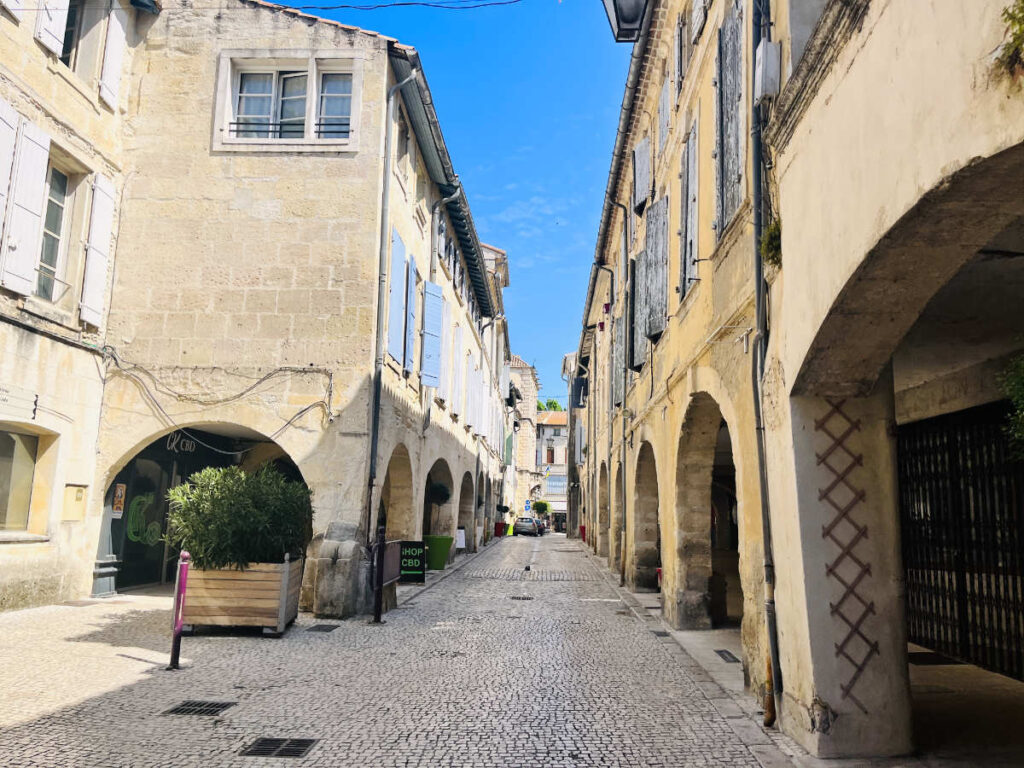
With its arcades dating back to the 13th century, Rue des Halles with its arcades was the commercial hub of the town. The name Les Halles comes from the fish hall erected next to the Hôtel de Ville (City), with the butchers’ stalls on the other side.
6. Musée Souleiado
Once a hotel particulier (private mansion) owned by the Aiminy family, it was built in the 17th century. They would sell it to the Demery family in 1916, who became famous of selling printed cloths.
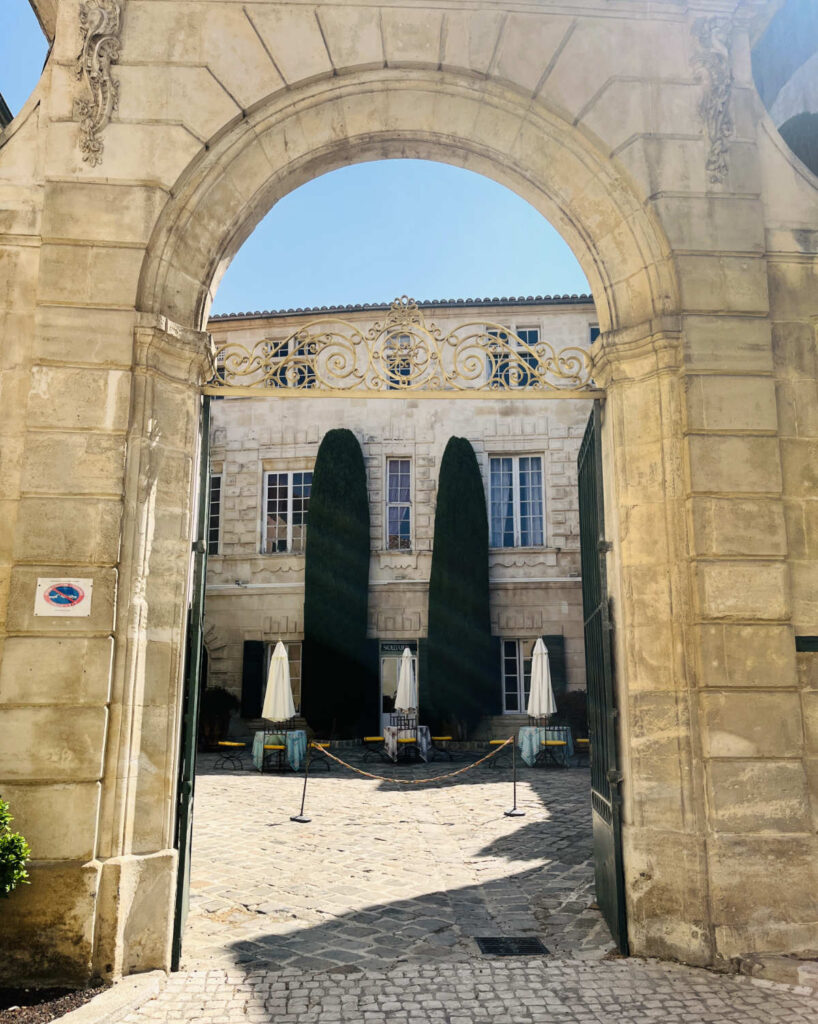
Their brand name was “Souleiado”, becoming world-renowned for a type of printed cloth in the provençale style that was produced in the area. Today the museum holds a collection of these cloths, as well as other objects like pottery, furniture, paintings, etc. that originate in the area.
7. Try a local specialty
Tarascon on the edge of the river Rhône has a lot of restaurants and eateries offering a variety of culinary delights from Provence. From anchoiade (a sauce made from anchovies), to bouillabaisse and local almonds, there is plenty to try to indulge in.
The name “frigolet” became famous for a local “elixir” called frigolet liqueur which uses 30 varieties of herbs and spices from the surrounding mountains and river banks to distill and flavor a liquor. The liqueur was invented over 150 years ago, and the distillery still uses the same recipe today.
There is also a weekly market in the center of Tarascon every Tuesdays morning. The market is located in between Cours Aristide Briand, Rue des Halles and Place de la rue du Louvre.
8. Head over the bridge to Beaucaire
If you are visiting Tarascon, you will want to head over to Beaucaire as well. Although the two towns face one another, they have always maintained their own culture and identity, one being Occitan and the other Provençale.
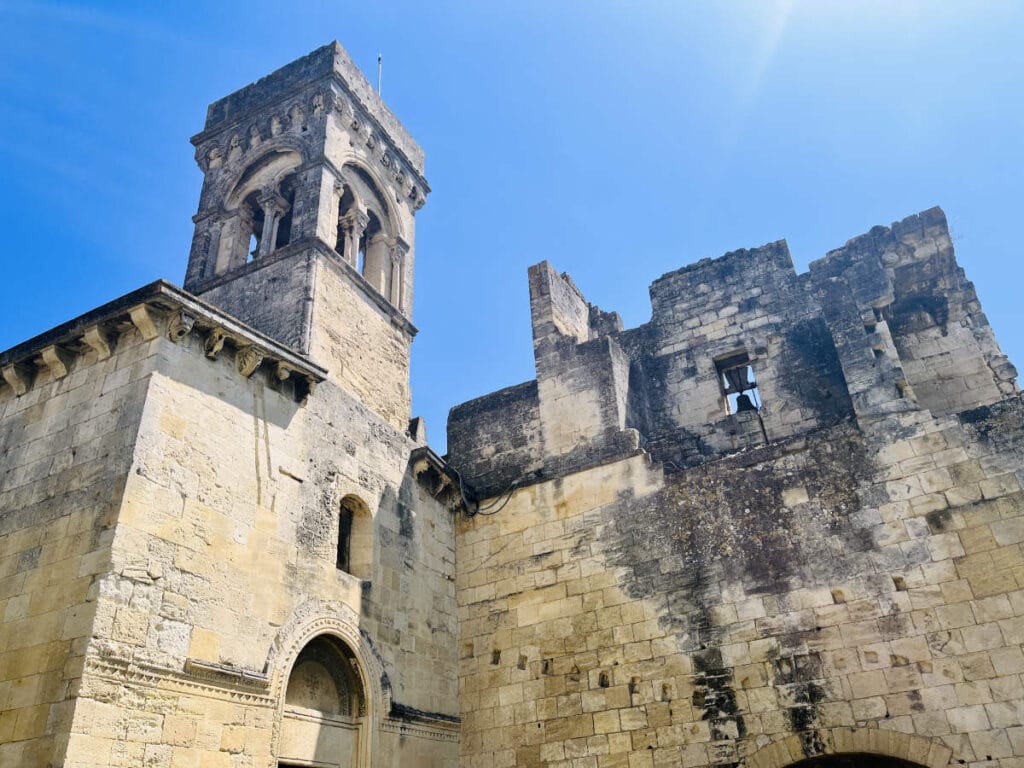
Founded in the 7th century BC, Beaucaire was once famous for being a relay town on the Via Domitia that linked the Roman Empire to the far lands of Spain. You can read more about visiting Beaucaire here.
9. Visit Pont du Gard
About 30 minutes away from Tarascon is an ancient Roman aqueduct known as Pont du Gard. Built over a period of 5 years in the 1st century, the aqueduct was built to carry water to over 50 km (31 miles) to the Roman colony of Nimes.
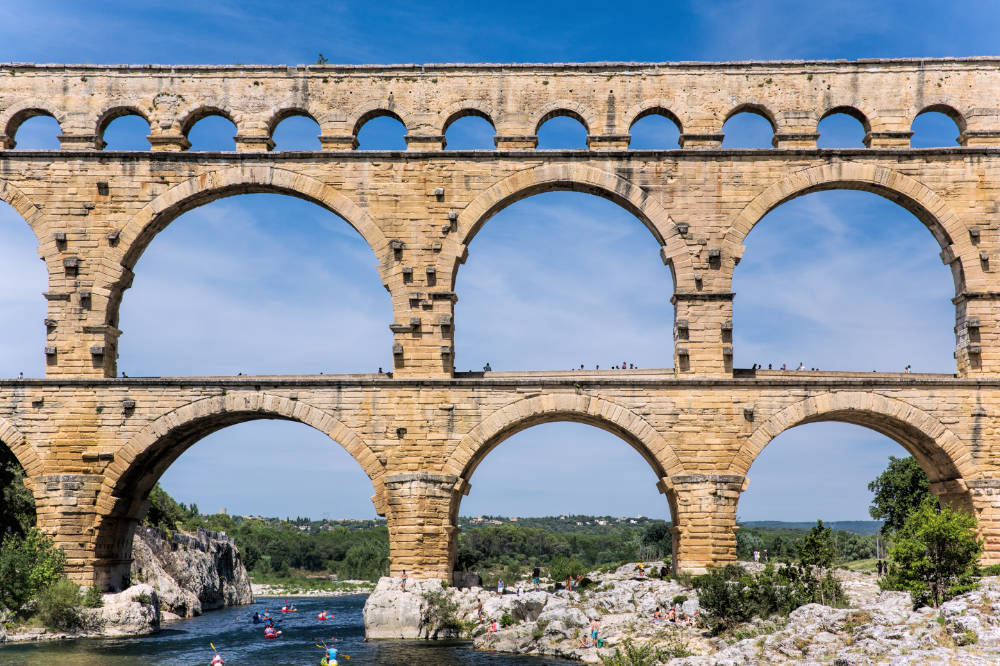
With 3 tiers of arches, it crosses the river Gardon and is the highest of all Roman aqueduct bridges, as well as being one of the best-preserved.
After the Roman empire collapsed, the Pont du Gard remained in use as it also served as a toll bridge for people looking to cross the river. The bridge remained mostly intact, with the Ducs of nearby Uzès being responsible for maintaining the bridge.
Rather than delivering water, the bridge instead became a tourist attraction, with everyone from French Kings to apprentice masons making their way to the bridge to admire its architecture.
Today, it is one of the most popular destinations in France. You will need a rental car to visit, or alternatively you can book a tour with transport.
How to get to Tarascon?
It takes around 6h45 minutes to get to Tarascon from Paris by car. The closest airport is in Marseille which is about 1 hour drive away.
If you are coming from Paris, you can take the TGV high-speed train from Paris to Nimes which takes around 3h and then take another train for 10 minutes to arrive in Tarascon.
How many days should you spend?
You likely only need a day to visit Tarascon and Beaucaire, but you may decide to base yourself here to visit all the other small villages and towns in the area like St. Remy de Provence, Roussillon, Arles, Avignon, Nimes, Uzès, etc.
Where should you stay?
There are not as many hotel options right in the Tarascon city center, as most hotels and lodging caters to those with a car who are heading to Pont du Gard and other small villages around the area.
In Tarascon:
- €€€ – Hotel de Provence – in Tarascon city center
- €€€€ – Mas des Comtes de Provence – luxurious hunting lodge located 2 miles away from Tarascon center
In Beaucaire:
- €€€ – Logis Vignes Blanches Hôtel – about 1 mile away from Beaucaire city center
- €€€€ – Hotel Domaine des Clos – Les Collectionneurs – about 3 miles away from Beaucaire city center, with swimming pool

If you enjoyed that article, you may like to read more about traveling around Provence. A bientôt!
